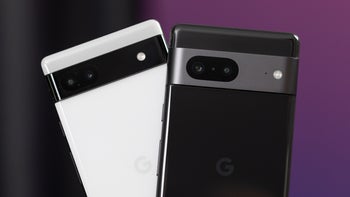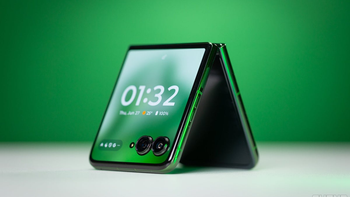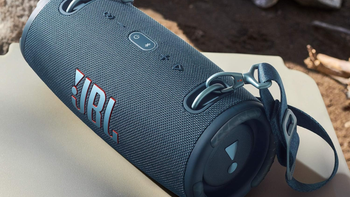Did big tech bully my favorite watchmaker out? Let's talk about Fossil's farewell
This article may contain personal views and opinion from the author.

Remember the epic high school graduation gifts? Not the embarrassing socks your grandma knitted (bless her heart) but the ones you have chosen yourself. I, for example, just wanted a gift that screams "adulting," and then one day, I found it. A watch with smooth brown leather, a sleek design, and a dark gold display – it instantly caught my eye. Trying it on felt like discovering the perfect fit. Enter Fossil, with its classic design and timeless appeal.
But alas, like that regrettable frosted tips trend, Fossil's smartwatch adventure didn't quite achieve cult status. In 2024, the company exited the market, which made me want to look closer at what went down. Let’s dive in.
Meet Fossil

Fossil Gen 6 (Image Credit–Fossil)
First things first. If you are unfamiliar with the company (I am sure not everyone is such a big fan), you should know that Fossil is a popular American watch and accessory company founded in 1984. It is known for its stylish and traditional watches, and in recent years, it had expanded into the smartwatch market.
Back in 2015, Fossil saw the smartwatch wave coming and decided to catch it. It hopped on the Wear OS bandwagon, offering smart versions of its classic designs. Fossil smartwatches run on Wear OS by Google, which is an operating system that is compatible with Android smartphones as well as with iOS, for that matter.
A blend of fashion and tech

Fossil Gen 6 (Image Credit–Fossil)
Fossil's smartwatch lineup is a fashion show on your wrist. Fossil watches come in a variety of styles that blend fashion with tech, so you can find one that matches your personal taste. They pack in a variety of features commonly found in other smartwatches, including:
- Heart rate monitoring
- GPS
- Fitness tracking
- NFC payments
- Google Assistant
- Customizable watch faces
- Built-in speaker and microphone
- Water resistance
One of the coolest things about the Fossil smartwatches is that you can make them totally yours with customizable watch faces. So, while you get access to the large Wear OS library, Fossil adds its own unique touch with a bunch of exclusive watch faces. Take the Fossil Gen 5, for example – it offered a whopping 55 different watch faces (later trimmed down to 24 in an update).
However, a sleek design and a variety of features might not be the right recipe for success, especially when the watch's battery life is not as long as some other smartwatches, the Wear OS is buggy at times, and it is more expensive than some of its competitors.
The cracks start to show

Image Credit–Fossil
Speaking of competitors, here is where things got a bit… rocky. Competition was fierce. Tech giants like Apple and Samsung were the Beyoncés of the smartwatch world, leaving Fossil feeling more like the awkward cousin at the family reunion. Yet, the smartwatch scene was brand new territory for Fossil, while Apple, for example, already had established brand loyalty in the tech world.
Research suggests that 80% of iPhone users who own smartwatches choose an Apple Watch, leaving the other 20% to consider alternative brands like Fossil. Fossil's compatibility with both Android and iOS makes it an option for iPhone users who aren't drawn to the design of the Apple Watch. Personally, I can't see myself wearing an Apple Watch, even though I use an iPhone; its design just doesn't appeal to me. That's why I was glad when Fossil entered the market with its stylish options.
It's not every day that a traditional watchmaker steps into the tech world. As said earlier, that's what made Fossil smartwatches stand out – they brought that classic watchmaker flair to the tech scene. Unlike a lot of other smartwatches that scream "tech gadget," Fossil watches offer that timeless watch design.
But again, here comes the software. Well, let's just say Wear OS wasn't exactly known for its user-friendliness on devices different than Google’s and Samsung’s. Bugs and limitations compared to its competitors left some users feeling more frustrated than accidentally hitting reply-all on a work email (shudder).
You can check out my colleague's experience with the Fossil Gen 6, for instance, which was not only annoying in terms of software performance but also literally gave him a skin burn. After all, Fossil is a watchmaker. Not a software engineer. And it shows (as much as I don’t want to admit it).
Fossil's farewell

Image Credit–Fossil
By 2024, the writing was on the smartwatch screen. Fossil, with a heavy heart (and maybe a sigh of relief), announced its exit from the smartwatch market. The reasons were a mix of the Wear OS woes, fierce competition from tech giants like Apple and Samsung, and a strategic shift back to its core business: timeless watches and accessories.
In a statement, Fossil spokesperson Amanda Castelli said:
As the smartwatch landscape has evolved significantly over the past few years, we have made the strategic decision to exit the smartwatch business. Fossil Group is redirecting resources to support our core strength and the core segments of our business that continue to provide strong growth opportunities for us: designing and distributing exciting traditional watches, jewelry, and leather goods under our own as well as licensed brand names.
It was a bittersweet moment for fans of the brand, but let's be honest, it wasn't entirely unexpected. The Gen 6 is the latest smartwatch series, and it was released around 3 years ago. The lack of new smartwatch models since 2021 signaled Fossil's gradual retreat from the market.
Fossil has assured users that it will provide updates for its existing Wear OS smartwatches for a few more years, offering some relief for current owners. However, once the updates cease, your smartwatch may become just a fossil waiting to be discovered by future generations around your home.
Circle back to the core issue

Image Credit–Fossil
Let's circle back to the core issue here. I touched upon the software challenges, which might leave you pondering why Wear OS doesn't quite deliver the same level of performance on Fossil devices as it does on competitors like the Pixel Watch or the Galaxy Watch 6.
The answer lies in updates (mostly). The introduction of Wear OS 3 in 2021, built on Android 11, marked a new era for smartwatches running on Google's software, starting with the Galaxy Watch 4 series. However, smartwatches from Google and Samsung quickly moved on to the next improved Wear OS 4 based on Android 13. Now, there are even rumors that Wear OS 5, built on Android 14, might be coming with the next-gen Galaxy Watch 7.
And yet, the newest Fossil smartwatches, like the Gen 6 series, are still rocking Wear OS 3. And believe it or not, they only got the update last year. Crunch the numbers, and you will see that an OS released in 2021 reaches Fossil (and other brands, mind you) almost two years later. So, yeah, bugs are par for the course.
Annoyingly late Wear OS

Image Credit–Fossil
Now, you might be wondering, why is that? Well, let's break it down. There are a couple of factors at play here, starting with the complexity of the Wear OS platform and the intricacies of partnerships and collaborations.
Wear OS is a complex operating system that needs to be customized for various hardware configurations. Each smartwatch manufacturer might use different sensors, processors, and other components, requiring specific adjustments to the OS for each device.
And it seems like Fossil simply didn't have the expertise to optimize the software for its smartwatches. Users reported encountering numerous bugs, experiencing lag, and sometimes the software didn't even work properly.
This customization journey can take a while because, you know, there are these pesky technical hurdles when tweaking the software for different hardware setups. Plus, there is the ongoing mission to keep that user experience top-notch across all devices.
Things go easier for Google and Samsung, as proved by updated Wear OS often debuting on a Galaxy Watch. Both tech giants teamed up to give Wear OS a serious boost, aiming to speed up app launches, extend battery life, and create a more seamless platform. Their collaboration isn't just about smartwatches; they are also teaming up to enhance smartphones. Case in point: the latest Galaxy S24 series, packed with AI features straight out of Google's Pixel playbook.
Apple and Samsung are not easy to compete with

Apple Watch Ultra 2 next to Galaxy Watch 6 Classic (Image Credit–PhoneArena)
Going head-to-head with the big tech giants is no walk in the park. Stats paint a pretty clear picture – Apple is the heavyweight, holding about 30% of the global smartwatch market share (of course, brand loyalty should be considered here as a factor), with Samsung following at around 10%. Huawei, Amazfit, and Garmin are each snagging around 5% of the market share. Nearly half of all smartwatch sales belong to these tech titans.
The rest? Well, they are duking it out for whatever's left. Some reports suggest hundreds of smartwatch manufacturers worldwide, but pinpointing the exact number of smartwatch manufacturers globally is challenging due to the dynamic nature of the market and varying definitions of "manufacturer."
The smartwatch market isn't as massive as you might think. Take the US, for instance – only 12.2% of Americans are rocking a smartwatch or fitness tracker. Zoom out a bit, and the global scene shows about 219.43 million smartwatch users as of 2023. So, slipping off the radar might be quite easy, considering the circumstances.
Lessons learned
What can we learn from Fossil's smartwatch journey? Well, for starters, it's a reminder that even the coolest trends can have an expiry date. And that tech giants, with their bottomless pockets and fancy gadgets, are tough competitors to beat. But it also highlights the importance of focusing on core strengths.
Fossil realized its expertise lies in traditional watches and accessories, and that is where it is doubling down, which is a wise choice if you ask me. Why? For once, spreading efforts across different areas can be resource-intensive. Focusing on traditional watches could allow Fossil to streamline operations, maximize its expertise, and potentially achieve greater efficiency. Otherwise, failing to innovate within its core area could leave Fossil vulnerable to competitors offering novel designs or features in traditional watches.
Who knows, maybe the future holds another smartwatch foray for Fossil. Why not in the form of collaboration with one of the big players (I wish)? But until then, we can appreciate the company's attempt to blend fashion and tech, even if it didn't quite hit the right note.













Things that are NOT allowed: